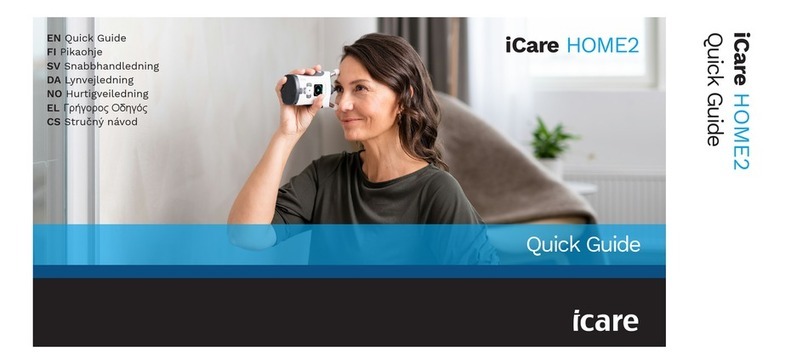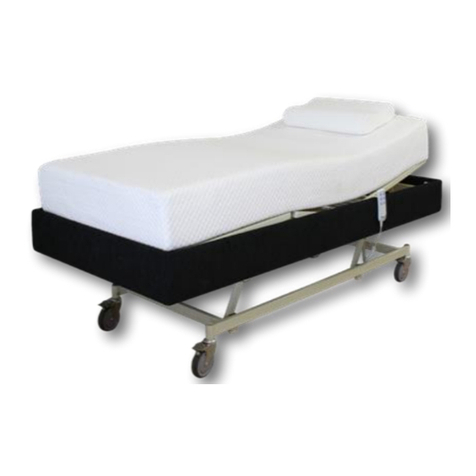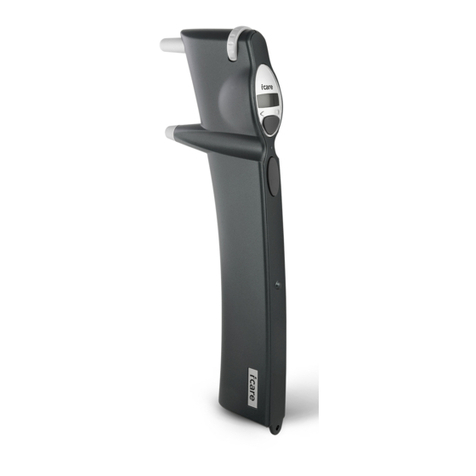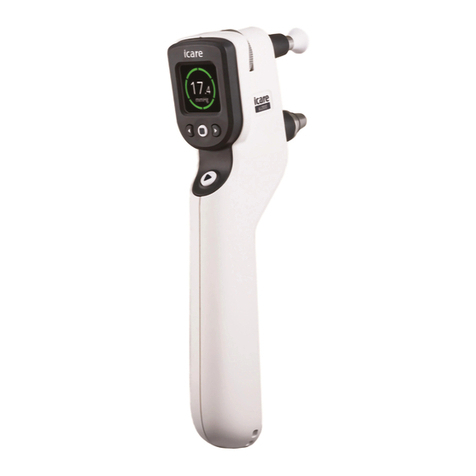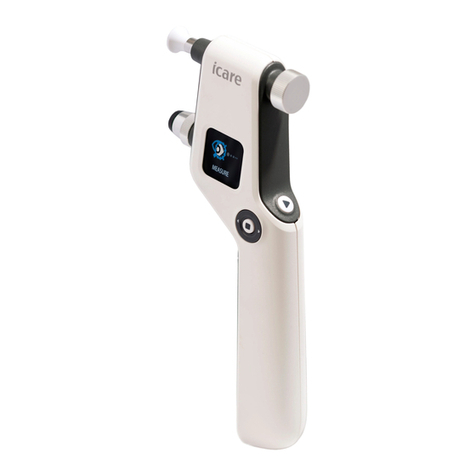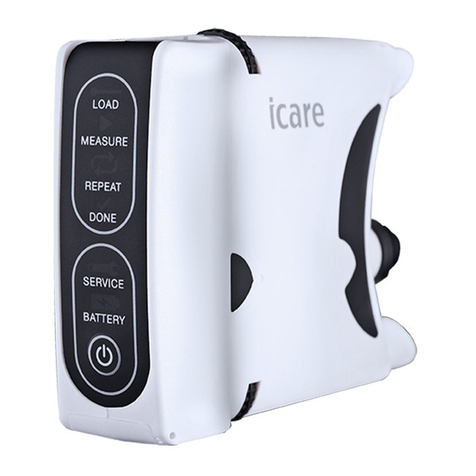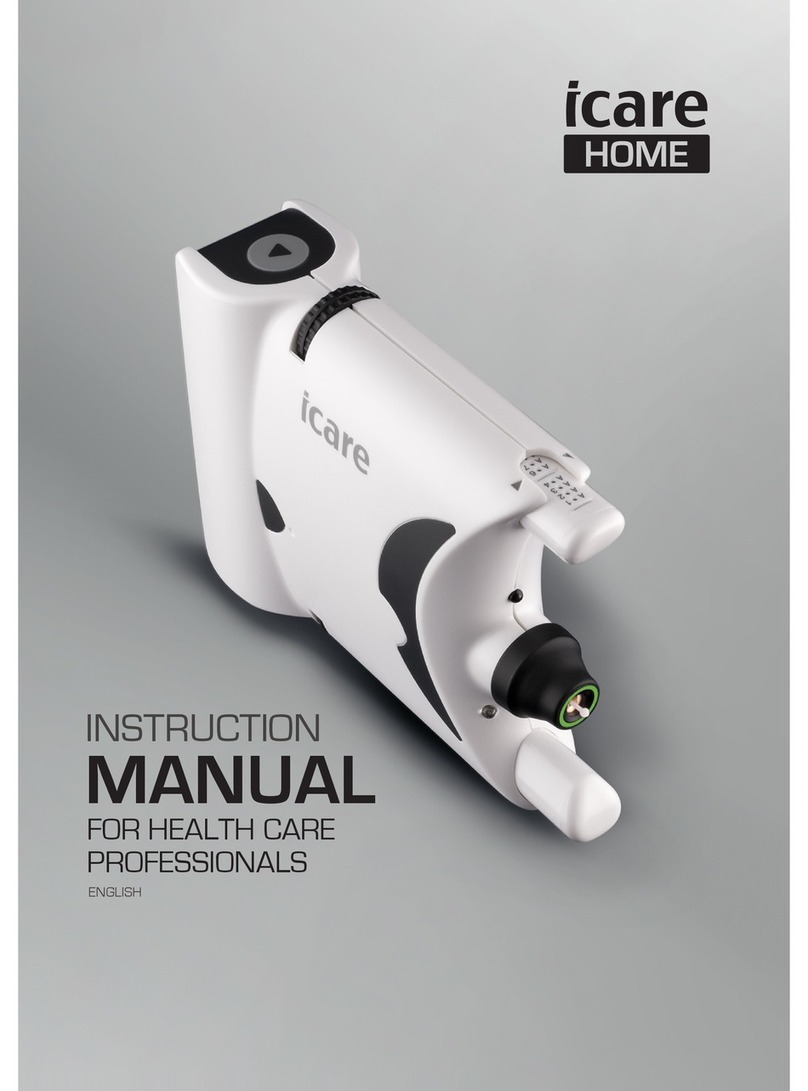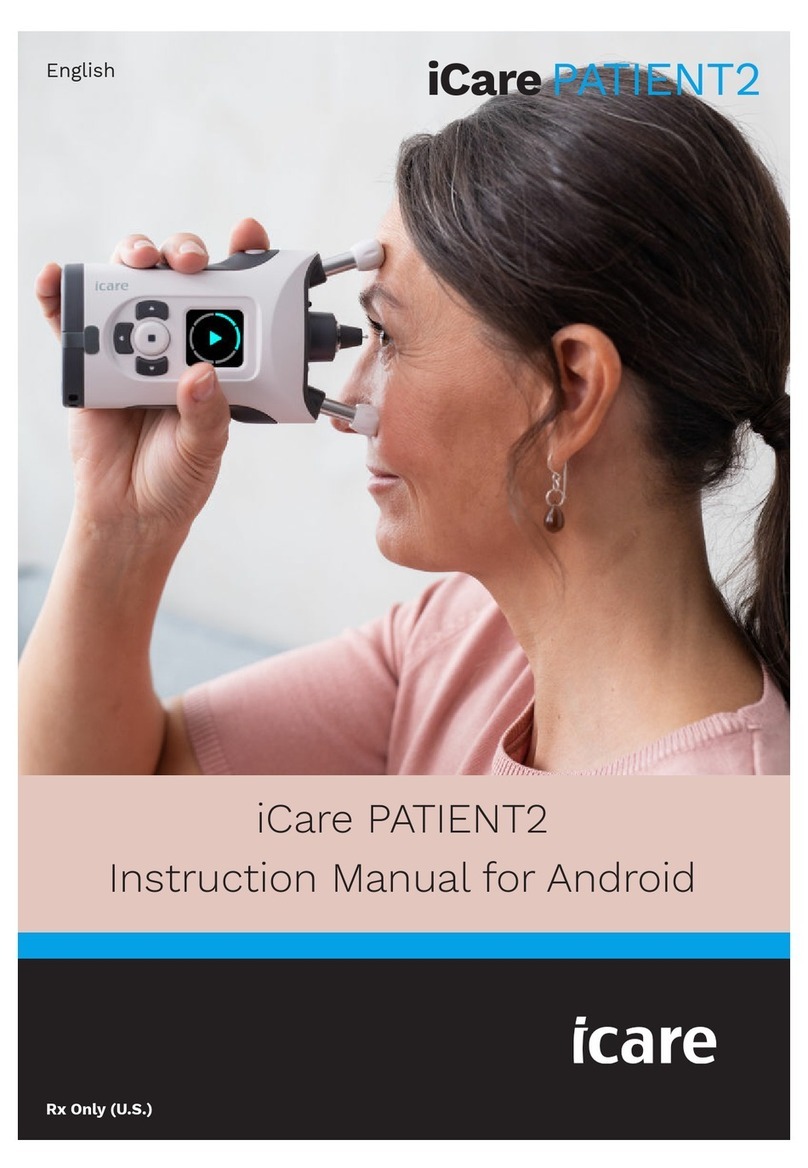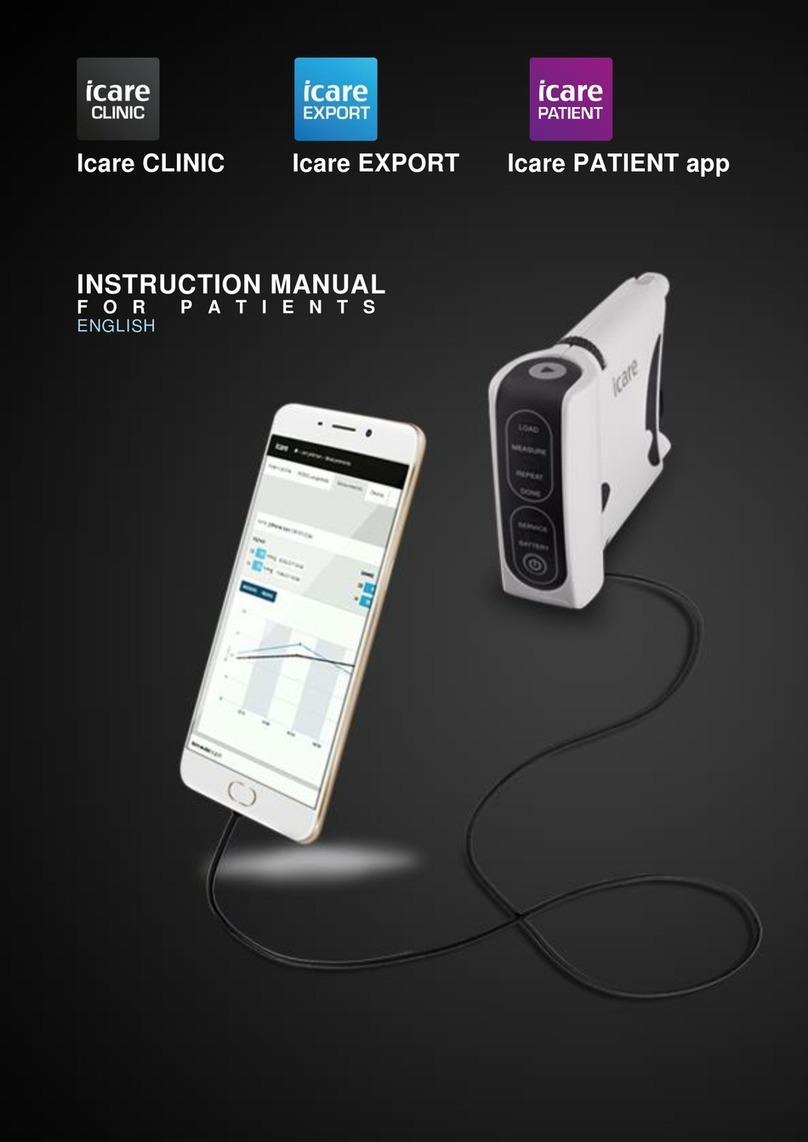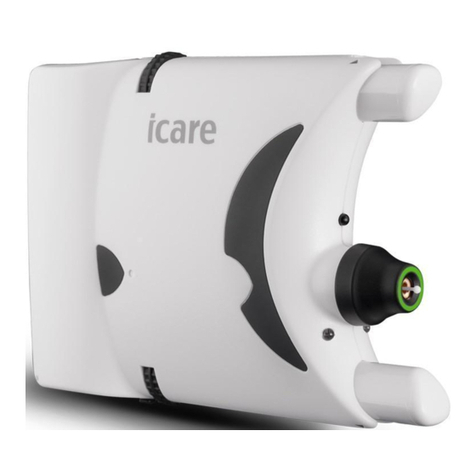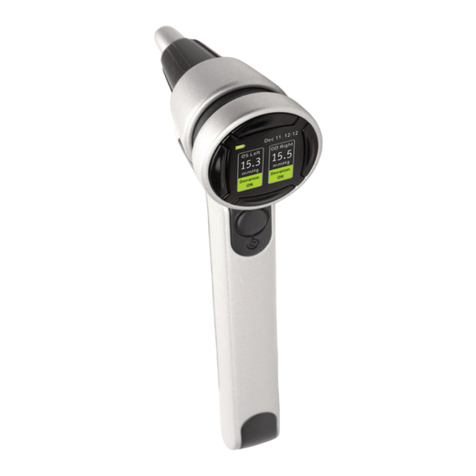Step 2. The device should be in a horizontal
position. Keep the probe horizontal and
pointing perpendicularly to the center of the
cornea. The distance from the tip of the probe
to the patient’s cornea (Figure 8) should be 4-8
mm (5/32 - 5/16 inch).
If necessary, adjust the distance by turning the
forehead support adjusting wheel.
Correct alignment of the tonometer and green
probe base light indication (Figure 9).
If probe base light indication is set OFF green
arrows will indicate the correct alignment of the
tonometer (Figure 10).
Incorrect alignment of the tonometer and red
probe base light indication (Figure 11).
If probe base light indication is set OFF red
arrows will indicate the incorrect alignment of
the tonometer (Figure 12).
Step 3. You may perform the measurement in
single or series mode (Figure 13).
Single mode: Press the Measure button lightly
to perform the measurement, taking care
not to shake the tonometer. The tip of the
probe should make contact with the central
cornea. Six measurements should be made
consecutively, blue segments will be lit after
every successful measurement. After each
successful measurement, you will hear a short
beep.
Series mode: Keep the Measure button down
to obtain the sequence of six measurements,
blue segments will be lit after every successful
measurement.
To obtain the nal reading, six measurements
are required. The measurement values
displayed before the nal result are average
values for all previous measurements (1.-5.).
Single measurement values are not shown.
TOO NEAR
If there is an erroneous
measurement, the tonometer will beep twice
and display an error message. Press the
Measure button to clear the error message. If
several erroneous measurements appear, see
error messages.
Step 4. Once the six measurements have been
performed, you will hear a long beep. The
nal IOP will be shown on the display rounded
by green (perfect, Figure 14) or yellow (some
variation, Figure 15) segments. If variation is too
big. Repeat will be displayed.
REPEAT
The displayed result is an average of four
measurements as the highest and the lowest
reading are discarded before the average
calculation.
The colors green and yellow as well as repeat
indication are related to the standard deviation
(SD) of the probe’s motion parameters of the
four remaining measurements.
Step 5. Following the performance of the entire
measurement, a new measurement series can
be begun by pressing the Measure button. The
tonometer will then reactivate the probe and
be ready for the next measurement series with
the Play symbol on the display (Figure 16). The
measurement sequence can be aborted by
pressing the Select button. Place the probe base
cover back to cover the probe base when the
tonometer is not in use.
If the user doubts the validity of the
measurement (for example, if the probe made
contact with the eyelid, or missed the central
cornea etc.), it is recommended that he/she
repeat the measurement. In addition, when
encountering unusual values (for example, very
high or very low values) it is recommended that
a repeat measurement be taken either with the
Icare tonometer or an alternative method to
verify the result.
*Badouin C, Gastaud P. Inuence of topical
anesthesia on tonometeric values of intraocular
pressure. Ophthalmologica 1994;208:309-313.
